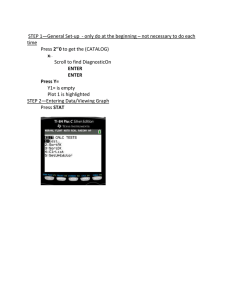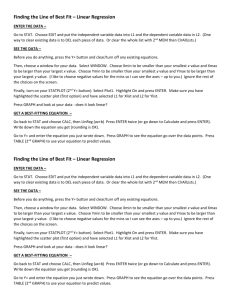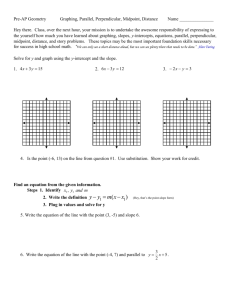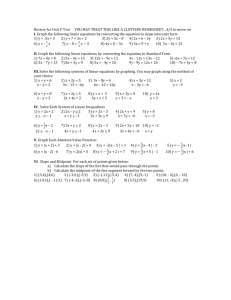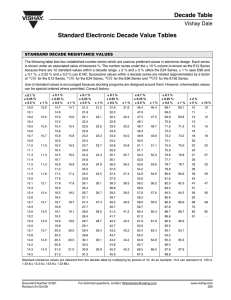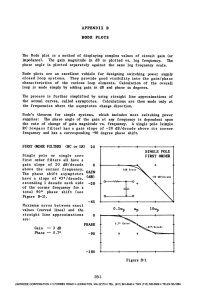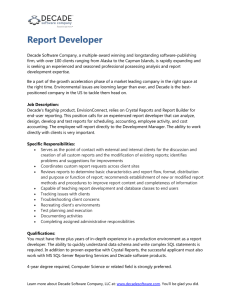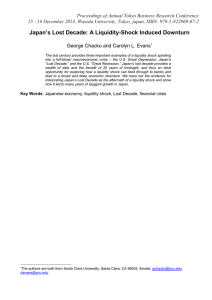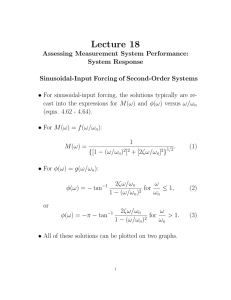Section 1.6 Fitting Linear Functions To Data
advertisement
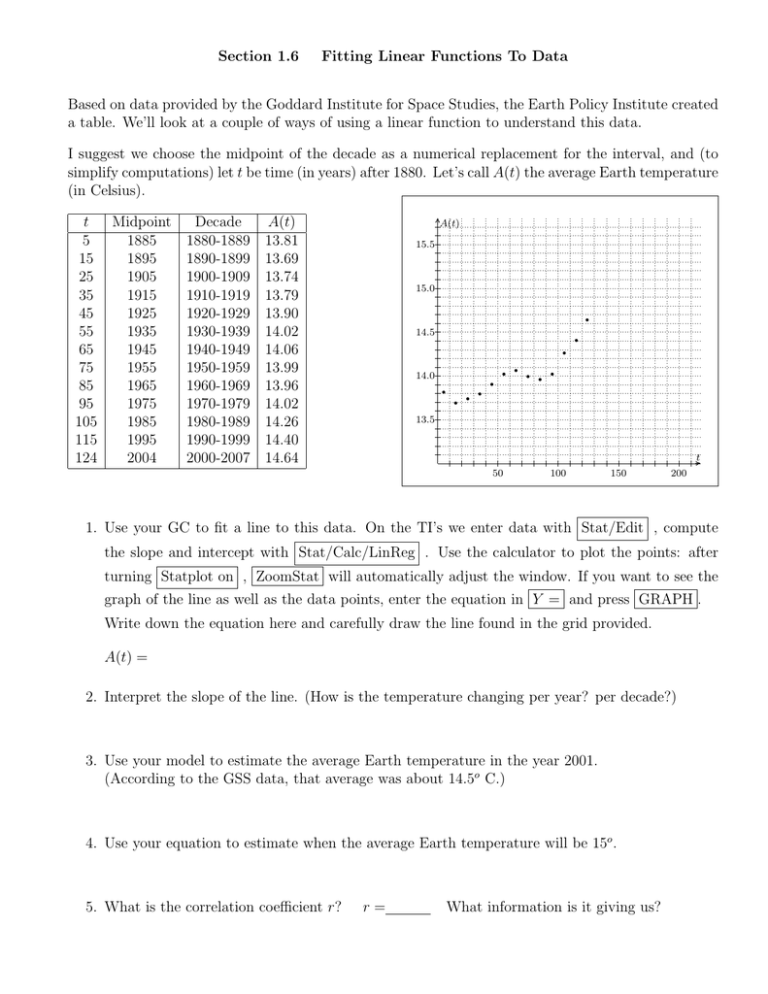
Section 1.6 Fitting Linear Functions To Data Based on data provided by the Goddard Institute for Space Studies, the Earth Policy Institute created a table. We’ll look at a couple of ways of using a linear function to understand this data. I suggest we choose the midpoint of the decade as a numerical replacement for the interval, and (to simplify computations) let t be time (in years) after 1880. Let’s call A(t) the average Earth temperature (in Celsius). . ....... t Midpoint Decade A(t) 5 1885 1880-1889 13.81 15 1895 1890-1899 13.69 25 1905 1900-1909 13.74 35 1915 1910-1919 13.79 45 1925 1920-1929 13.90 55 1935 1930-1939 14.02 65 1945 1940-1949 14.06 75 1955 1950-1959 13.99 85 1965 1960-1969 13.96 95 1975 1970-1979 14.02 105 1985 1980-1989 14.26 115 1995 1990-1999 14.40 124 2004 2000-2007 14.64 A(t) 15.5 15.0 • 14.5 • • • 14.0 • • • • • • • • • 13.5 t .......... 50 100 150 200 1. Use your GC to fit a line to this data. On the TI’s we enter data with Stat/Edit , compute the slope and intercept with Stat/Calc/LinReg . Use the calculator to plot the points: after turning Statplot on , ZoomStat will automatically adjust the window. If you want to see the graph of the line as well as the data points, enter the equation in Y = and press GRAPH . Write down the equation here and carefully draw the line found in the grid provided. A(t) = 2. Interpret the slope of the line. (How is the temperature changing per year? per decade?) 3. Use your model to estimate the average Earth temperature in the year 2001. (According to the GSS data, that average was about 14.5o C.) 4. Use your equation to estimate when the average Earth temperature will be 15o . 5. What is the correlation coefficient r? r= What information is it giving us?
